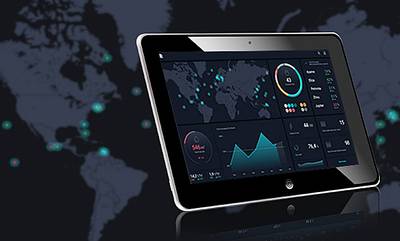Rolls-Royce has launched the next generation of its Energy Management (EM) System. The system will allow customers to reduce energy usage, fuel consumption and operating costs whilst supporting environmental compliance and providing performance information that enables the ship to comply with SEEMP rules and IMO regulations.
The Energy Management System offers customers a more data-driven performance management and decision making approach. This will give an enhanced ability to monitor the performance of an individual vessel or a fleet. It can also increase crew awareness of individual ship performance and encourage healthy vessel-to-vessel benchmarking and competition, improving the performance of a specific vessel through the propagation of best operating practices.
The system can be easily retrofitted and is also customizable to meet specific customer needs. It is suitable for a wide range of vessels, particularly those using large quantities of fuel. For example ferries, cruise and ropax ships, offshore vessels, fishing vessels and cargo ships.
The Energy Management System collects and processes data from a multitude of sensors on the vessel. Data sources include the engines, propulsion system, automation, deck machinery and other equipment. The data collected from frequent sampling is available on board and is securely encrypted before being transmitted via link on to a secure Rolls-Royce-hosted web portal, where much more detailed analysis and comparisons can be carried out.
A cloud-based portal enables fleet operators to compare real-time and historical performance indicators and baseline analysis. Selected information is displayed graphically to make it as accessible and easy to use as possible.
For example fuel consumption and fuel consumption per nautical mile can be displayed, showing current levels against a baseline of historical data. Operators can quickly and easily see whether consumption is higher than needed for the conditions, and whether the number of engines running should be changed to bring the operating engines into the load range with the lowest specific fuel consumption. This allows the crew to minimise fuel use and cut emissions.
Marco Cristoforo Camporeale, Rolls-Royce, General Manager, Intelligent Asset Management said; “Golden Energy Offshore tell us that during trials of the Energy Management System on-board two of their UT 776 CD PSVs they have demonstrated fuel savings up to 15 percent. We were expecting a slightly lower figure, somewhere between 5 and 10 percent.”
Per Ivar Fagervoll, CEO Golden Energy Offshore, one of Rolls-Royce’s Energy Management System’s pilot customers who have had two vessels in their fleet of ten vessels equipped with a trial Energy Management System since early 2015, said: “For us, as a vessel operator, it is important to maintain a high focus on energy efficiency through our management system – which among other standards includes fully certified ISO 50001 (Energy Management) – and meeting the high goal we set on Energy Performance indicators.”
“Through the Rolls-Royce Energy Management System, we are able to optimize the energy use on board by adjusting our switchboard configurations, with efficient use of the generators for standby sailing and when in DP mode. Accurate fuel consumption measured at an early stage also gives us the opportunity to adjust the vessels’ speed and trim to save fuel.
“Our experience with the Energy Management System has demonstrated the potential to save more than 10 percent in our fuel bill. The information displayed on energy management on-board and ashore also has a significant positive effect on human factors and the attention on energy efficiency, which should not be underestimated. Beyond cost savings, we believe that a focus on emissions and energy efficiency goes a long way in fulfilling our responsibility towards the environment, and will also give us a competitive advantage in our marketplace.”
The Energy Management System has also been installed on the newly delivered fishing vessel, Ramoen, and a Hurtigruten cruise ship.
Norwegian short sea shipping and logistics company NorLines has ordered Rolls-Royce’s latest Energy Management System for two vessels the Kvitbjørn and Kvitnos.
The system is available in three packages.
Package one covers fuel and emissions monitoring. Here both sailing performance and stationary performance of the vessel is shown for the actual operational profile. Different legs of a voyage can be automatically detected and compared, and the system provides the evidence required for energy efficiency compliance.
Package two – fuel, emissions and ship performance monitoring – allows additional analysis of the ship’s performance including voyage performance, weather resistance indication, trim optimisation and operating cost, and machinery – engine and power-speed – performance. This solution may require more sensors but will give a fuller picture of the ship’s performance, and ways in which its efficiency may be improved.
Package three – comprehensive Performance Monitoring – provides even deeper insight into ship system performance. This includes speed optimization and propulsion performance, where the system also detects and advises if propeller cavitation is likely. It also displays energy balance, which maps the produced electrical power on-board against the distribution of its major energy consuming equipment. The thermal sankey module visualises the thermal energy path and shows energy loss and recovery from the heat waste system.
The Energy Management System also offers customizable modules that can be tailored to meet specific customer needs. Some examples include hull growth indication, hull condition monitoring and custom operational KPI reporting.
Rolls-Royce can also provide expert analysis of the data and suggest where further improvements could be made through upgrading equipment, such as reblading of propellers. Analysis of data from a vessel in service can also improve the design and specification of future vessels in an owner’s fleet renewal program.














